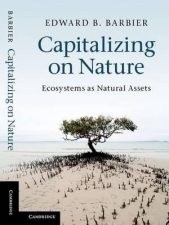 How do you measure human well-being? How do you fully account for the impact of human interventions in poor regions like in Iraq? What costs are paid by the citizens of one country for the consumer demands of another?
How do you measure human well-being? How do you fully account for the impact of human interventions in poor regions like in Iraq? What costs are paid by the citizens of one country for the consumer demands of another?
Renown economist Partha Dasgupta’s recent book, ‘Human Well-being and the Natural Environment’ is not for the faint-hearted. It is academic in style and suitable for ‘economists, and students of economics, environmental studies, political science and political philosophy’, as is described on the jacket. It would also interest motivated readers.
Not being familiar with economic theory, equations or statistics, I did find this a challenging read and much was inaccessible to me. I am an intuitive person by nature and was attracted by the title. I am grateful that it had such appeal because it is unlikely that I would have picked it up if it had been called, ‘An in-depth theoretical study of how to evaluate policy change impact on social well-being and the natural environment in regions of poverty’, which may have been more accurate. Having said that, this book gave me much food for thought and stimulated a desire in me to speak with the author.
I gained much from this work including an insight into: the importance of which indicators can be used to measure well-being, particularly when studying ‘poor people in poor countries’ i.e. ‘private consumption per head, life expectancy at birth, literacy, and civil and political liberties.’; the limitations of using GNP (Gross National Product) as an indicator of social well-being; the need for a holistic understanding of the non-market transactions of a community prior to implementing change; and the difficulties of fully accounting for the impact of change in a meaningful way.
I gained a fuller understanding of the complexity of human existence across a range of countries and the interrelationship between democratic processes, civil conflict, war and the natural environment. For example, the author notes that, ‘the majority of the poorest countries today lie in the tropics. In contrast, most of the rich countries are in the temporate zones’, equally, ‘many infectious diseases are endemic in the tropics and subtropical zones…..Warm climate enables the pathogens to flourish over the entire year, making it that much more difficult to control diseases.’
Where malnutrition plays a part in a country’s well-being, the author notes, ‘Undernourishment displays hysteresis. (Stunting and cognitive disability, caused by early malnutrition and infection, can’t be erased in later life.) This makes the labour and credit markets discriminate even more against those who are poor.’
I was made to consider the various stakeholders of the natural environment; ‘Watershed forests purify water and protect downstream farmers and fishermen from floods, drought, and sediments. In tropical watersheds, forests house a significant quantity of carbon and are the major location of biodiversity, A forest canopy can house several thousand species of living forms in a single hectare…..Some of the products of watersheds are necessities for local inhabitants (forest dwellers, downstream farmers, fishermen), some are sources of revenue for commercial firms (timber companies), whilst others are luxuries for outsiders (eco-tourists).‘
For me, as a concerned citizen and as a keen traveller who has visited some of these so-called ‘un-developed countries’ Dasgupta describes, it has opened up a whole new world of looking at what we value, how we evaluate the impact of change and how we need to understand the cultural differences of ‘poor’ communities where there may be a need to intervene.
I was left with a question: How does one calculate the increase to the power base of a company that exploits small local communities for its own ends? It is, after all the power base that will enable the company to continue to exploit further local communities and influence government decision-making. I feel if this measurement isn’t included and accounted for against the social and natural environment costs, the long-term costs of globalisation on social well-being and natural resources will continue to be underestimated.
‘Human Well-being and the Natural Environment’ by Partha Dasgupta, 2010
Published by Oxford University Press, UK
Louise Gethin, reviewer, was brought up in Bristol, where she currently lives, though she has lived in France, Germany and New Zealand, and has spent time holidaying in Jerusalem, Spain, Ireland, Indonesia, Australia and Singapore. She’s a keen amateur photographer, cyclist and hockey player. Her biggest ambition is to publish her collection of short stories ‘Anecdotes of Love and Death’.



